Tech Contracts 101: The Essentials For Every Company
Planning and executing IT projects involve several functional components. Whether it's software development, app building, or hardware installation, these undertakings have constantly changing demands and legal constraints.
Businesses require well-written contracts to address the obligations, complexities, and risks that come with these IT relationships. In this blog post, we’ll delve into the basics of tech contracts, why they matter, and what every company needs to know to protect itself.
What are Tech Contracts?
A tech contract is a legal agreement that outlines the responsibilities, rights, and obligations of parties involved in technology-related transactions. These contracts may address a diverse range of topics, including software development, service agreements, and licensing agreements.
A well-written agreement allows parties to deliver technology projects while maintaining execution, timelines, budgets, and stakeholder collaboration. Determining the goals, requirements, scope, and risks ahead of time ensures that everyone is on the same page and reduces the likelihood of disputes. Throughout the partnership, they can monitor performance and progress to ensure that IT projects stay on course and adhere to budgets and timelines.
Key Components of Tech Contracts
Parties Involved: Every tech contract should identify the parties involved. This includes the names, addresses, and legal statuses of all entities engaged in the agreement. By specifying who is involved, businesses set the groundwork for accountability and responsibility.
Define Scope: It is arguably one of the most crucial components of a tech contract, which helps prevent scope creep. This section outlines the specific tasks, deliverables, and timelines that both parties agree upon. A well-defined SOW helps in managing expectations and reduces the risk of disputes later on.
Intellectual Property Ownership: These clauses address who owns the work and how it can be used. They define the rights and responsibilities of the IP created or used within the tech contract. It clarifies whether works, trademarks, software, patents, and confidential data are owned solely or jointly, preventing future disputes.
Data Privacy and Security: Technology contracts include provisions for protecting confidential information and personal data. They must comply with relevant laws and regulations while handling access controls, data breaches, encryption, and security measures.
Liability: These clauses define the extent to which each party is responsible for potential losses or damages, helping to allocate risk fairly and predictably. These clauses may cap damages, exclude certain types of losses (consequential damages), or set specific indemnity obligations.
Warranties: They establish the baseline assurances regarding the performance, quality, and functionality of products or services. Warranties typically cover conformance to specifications, compliance with laws, and freedom from defects, giving customers confidence in the deliverables. Conversely, disclaimers limit the provider’s liability for outcomes not expressly guaranteed, such as implied warranties of merchantability or fitness for a particular purpose.
Termination and Exit Strategies: They ensure a structured, predictable conclusion to a tech contract, allowing either party to disengage under predefined conditions without business disruption. Contract exit management should cover grounds for termination (e.g., breach, insolvency, or convenience), required notice periods, and obligations post-termination, such as data return or destruction.
Dispute Resolution: These clauses offer a roadmap for handling conflicts without resorting immediately to litigation, aiming for speed, cost-efficiency, and minimal disruption. These provisions typically outline escalation procedures, mandatory mediation or arbitration, choice of law, and venue for any legal action.
What are the Common Types of Tech Contracts?
Technology contracts define the rights, responsibilities, and expectations between parties involved in the development, delivery, or use of technology products and services. As businesses increasingly depend on digital tools, software, and cloud-based platforms, clear contractual frameworks help manage risks, ensure compliance, and protect intellectual property. Various types of tech contracts serve different functions, from licensing software to managing service levels or processing personal data. Understanding these common contract types is crucial for both providers and users to ensure smooth collaboration, avoid disputes, and uphold legal and regulatory standards.
End User License Agreement (EULA)
A EULA is a legal agreement between the software provider and the end user that governs how the software can be used. Typically accompanying software installations, EULAs define usage rights, restrictions, ownership, and liabilities. It often specifies that the user is purchasing a license to use the software—not the software itself—preserving the provider’s intellectual property rights. EULAs also include terms regarding copying, modifying, redistributing, or reverse-engineering the software. They may outline limits of liability, termination clauses, and dispute resolution mechanisms.
Service Level Agreement (SLA)
A Service Level Agreement (SLA) defines the expected level of service a provider must deliver, commonly used in IT services, SaaS offerings, and managed service contracts. It outlines measurable performance metrics such as uptime guarantees, response times, support availability, and issue resolution timelines. SLAs often include penalties or credits for failing to meet defined standards, creating accountability for the service provider. This helps ensure reliability, continuity, and quality of service, which are critical in tech-dependent operations. SLAs can also include provisions for reporting, monitoring, and periodic reviews to track performance.
Master Services Agreement (MSA)
A Master Services Agreement (MSA) is a broad contract that sets the foundational terms and conditions between two parties for ongoing or future work. In the tech industry, MSAs are often used between vendors and clients to streamline engagements, allowing multiple projects or transactions to be governed by a single overarching agreement. It typically covers payment terms, confidentiality, intellectual property ownership, liability, and dispute resolution. Each specific engagement or project is then defined in separate Statements of Work (SOWs), which refer back to the MSA.
Software Licensing Agreements
Software Licensing Agreements specify how a software product can be used by the licensee, defining rights, limitations, and obligations. These agreements vary widely—ranging from single-user licenses to enterprise-wide or subscription-based models—and can apply to on-premise, cloud-based, or hybrid environments. They outline key terms such as license scope, duration, fees, maintenance, support, and restrictions on copying or redistribution. Importantly, they also address compliance, auditing rights, termination, and legal recourse in case of misuse. These agreements are crucial for protecting the intellectual property of software developers and ensuring users comply with legal usage terms.
Data Processing Agreements (DPA)
Data Processing Agreements (DPAs) are contracts between data controllers and processors that establish rules for handling personal data in compliance with data protection laws such as GDPR or CCPA. A DPA defines the scope, purpose, and duration of data processing, as well as the obligations of both parties to ensure data security, confidentiality, and lawful processing. It often includes clauses on data breach notification, subprocessors, data subject rights, and audit rights. DPAs are especially critical when outsourcing functions like cloud storage, analytics, or customer support that involve access to personal data.
How do you effectively manage Tech Contracts?
Effectively managing tech contracts is essential for ensuring compliance, minimizing risk, and maximizing the value of business relationships involving technology products or services. Poor contract management can lead to misunderstandings, service disruptions, legal disputes, and financial losses. As tech contracts often involve complex terms around intellectual property, data usage, service levels, and security obligations, businesses need structured processes and tools to monitor and enforce these agreements. Effective contract management involves more than just signing and storing documents—it requires continuous oversight, stakeholder collaboration, and proactive risk mitigation.
Centralize Contract Storage and Access
Storing all tech contracts in a centralized, searchable repository ensures that authorized stakeholders can quickly access the most current versions of agreements. This reduces the risk of relying on outdated documents and facilitates easier audits, renewals, and compliance reviews. Cloud-based contract management systems also support version control, automated alerts, and role-based access, improving visibility and reducing administrative overhead.
Monitor Key Dates and Obligations
Tracking important milestones—such as renewal dates, notice periods, and deliverables—is critical for maintaining compliance and leveraging negotiation opportunities. Automated reminders can prevent unintentional renewals or lapses in service. Regularly reviewing performance obligations and deadlines helps ensure both parties are meeting their responsibilities and allows early intervention if targets aren’t met or risks arise.
Maintain Cross-Functional Collaboration
Effective tech contract management requires coordination between legal, procurement, IT, finance, and business teams. Each function contributes unique expertise, from understanding legal language to tracking service usage or managing budgets. Collaborative workflows ensure all relevant perspectives are considered when interpreting terms, managing renewals, or handling disputes, leading to more informed and balanced contract decisions.
Conduct Regular Performance Reviews
Regularly assess whether vendors and internal teams are meeting contractual commitments such as service levels, support responsiveness, and data security requirements. Performance reviews, based on SLAs or KPIs, can identify areas for improvement or potential renegotiation. These evaluations also foster accountability and strengthen business relationships by addressing issues proactively rather than reactively.
Ensure Compliance and Risk Mitigation
Tech contracts often involve data privacy, cybersecurity, and regulatory compliance obligations. Routine audits and compliance checks help identify gaps, especially when laws or business operations change. Maintaining updated DPAs, reviewing security practices, and conducting vendor risk assessments reduce legal exposure and reinforce trust with customers and regulators.
Plan for Termination and Renewal Strategically
Don’t wait until the last minute to review termination clauses or renegotiate terms. Establish timelines to evaluate contract performance and business needs well before renewal deadlines. If termination is necessary, follow documented procedures to ensure smooth transitions, protect data, and avoid service interruptions. Strategic planning allows you to optimize contract value while minimizing business disruption.
Conclusion
A well-drafted and effectively managed tech contracts are vital to safeguarding business interests, ensuring regulatory compliance, and fostering successful partnerships. From licensing software to defining service levels and protecting data, these agreements form the legal backbone of digital operations. Understanding the types of tech contracts, their key components, and best practices for management empowers businesses to reduce risk, maximize value, and adapt confidently to evolving technological and legal landscapes. With thoughtful planning, cross-functional collaboration, and ongoing oversight, organizations can turn their tech contracts into strategic assets that support long-term growth and resilience.
Book a Live demo
Schedule a live demo of Dock 365's Contract Management Software instantly.
.png?width=196&height=196&name=MicrosoftTeams-image%20(24).png)
Written by Deepti Gopimohan




